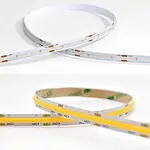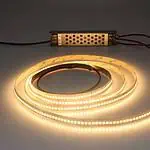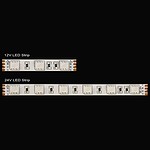Lighting plays an essential role in all architectural spaces. Its primary function enables us to see, but it also greatly influences the aesthetics and ambiance.
This is why the color temperature of your lighting is an important consideration. What kind of ambiance do you want your space to have? Do you want the home to look warm and welcoming or cold and formal? Also, what sort of CCT will help you achieve your desired effect?
The article will help you choose the correct CCT for your LED strip light.
What is the color temperature?
Color temperature is a unit of measurement that indicates the color component contained in light. Theoretically, the blackbody temperature refers to the color of an absolute blackbody after it has been heated from absolute zero (-273°C). When heated, the blackbody gradually changes from black to red, turns yellow, glows white, and finally emits blue light. When heated to a specific temperature, the spectral composition of the light emitted by the black body is called the color temperature. At this temperature, the unit of measurement is “K” (Kelvin).
The lower the color temperature value, the warmer the light color. The higher the color temperature value, the cooler the light color.

During the day, the color temperature of daylight constantly changes, from 2000K at sunrise and sunset to 5500-6500K at noon.

Correlated color temperature VS color temperature?
Color temperature is a measure used to describe the light color on the Planckian locus and produced by a Planckian radiator. This is a somewhat limited metric, as it applies only to the color of light from Planck radiators. Each color temperature unit has a set of chromaticity coordinates in a given color space, and the set of coordinates lies on the Planckian locus.
Correlated color temperature(CCT) is a measure used to describe the color of light located near the Planck locus. This metric has broader applicability because it applies to various fabricated light sources, each producing a spectral power distribution different from that of a Planck radiator. However, it is not as precise as a color temperature quantity since many points along a chromaticity diagram along an isotherm will have the same correlated color temperature.
Therefore, the lighting industry uses correlated color temperature(CCT).
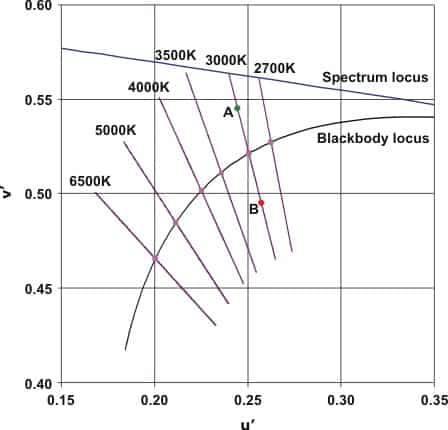
Factors to consider when choosing CCT?
CCT can affect people’s emotions and feelings, so it is essential to choose the correct CCT. Here are some factors that should be considered when selecting a CCT.
Brightness
Brightness can also affect a person’s mood.
CCT VS Lumens
Lumen is a description of how bright a light source is.
CCT describes the color of the light source. The lower the CCT, the more yellow the light source looks; the higher the CCT, the bluer the light source looks. There is no direct relationship between CCT and luminance.
Does CCT affect lumens?
High CCT lumens will also be higher for the same power LED strip.
The main reason is that human eyes are more sensitive to the light of high CCT and feel brighter.
So when choosing a low CCT LED strip, you need to ensure that the lumens are enough for you.
Effects of CCT on human feelings
Color temperature has a significant influence on human emotions. Warm white light makes people feel warm and relaxed. In contrast, the cold white light makes people feel severe, challenging, and low.
Adjustable CCT
Are you also thinking, is there a kind of LED light strip CCT that can be adjusted according to your needs? Yes, our CCT adjustable LED strip can meet your needs.
You can connect the adjustable CCT LED strip to the controller and then select the CCT you need through the controller.
How to choose the right CCT?
The most used color temperatures are 2700K, 3000K, 4000K, and 6500K. What color temperature to choose depends on where we want to use them and what kind of atmosphere we want to create.
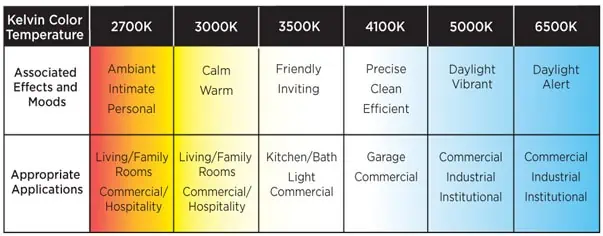
When to choose extra warm white 2700K?
Extra warm 2700K LED strip lights have a comfortable, intimate, warm white light that we recommend in living rooms and bedrooms. Warm white light is also considered conducive to relaxation. You may need a warmer light to prepare for sleep, as blue light can suppress the melatonin hormone the body naturally produces to fall asleep. For commercial applications, a warm glow creates a gentle, personal, homey atmosphere in restaurants, hotels, and retail stores.
When to choose warm white 3000K?
Compared to 2700K, 3000K looks whiter.
We recommend using white 3000K lighting in kitchens and bathrooms.
Compared to 2700K, the warm light of 3000K creates a relaxing atmosphere, but the surroundings are more precise and suitable for living areas where you usually do tasks. The warm light 3000K creates a comfortable, homey atmosphere for business applications in guest rooms, cafes, and clothing stores.
When to choose neutral white 4000K?
White 4000K has a clean, focused, neutral white light that can fit nicely in dens, garages, and kitchens. Compared to warm lighting, neutral white relaxes you and allows you to focus your attention. For commercial applications, this is ideal for offices, grocery stores, hospitals, classrooms, and jewelry boutiques, especially those selling diamonds or silver.
When to choose cool white 6500K?
White 6500K is recommended for workplaces that require improved attention and performance. These places can be laboratories, factories, and hospitals. Another critical application is agriculture, especially indoor gardening.
Why does the same CCT LED light look different?
You may encounter the problem that the same CCT LED lights, but the colors look different. Why does this problem happen?
Test equipment
The machine that tests the CCT is also called an integrating sphere. There are many brands and models of integrating spheres, and they all have different accuracy. So, LED lights from various manufacturers will have different colors for the same CCT if they use different integrating spheres.
The integrating sphere needs to be calibrated every month. If the integrating sphere is not calibrated on time, the test data will also be inaccurate.
CCT tolerance
Although LED lights are marked with 3000K, it does not mean that the actual CCT is 3000K. Different manufacturers have different CCT tolerance and control capabilities, so LED lights marked with the same CCT may have another actual CCT. Good manufacturers use color tolerance standards within three steps macadam for consistent color matching.
Duv
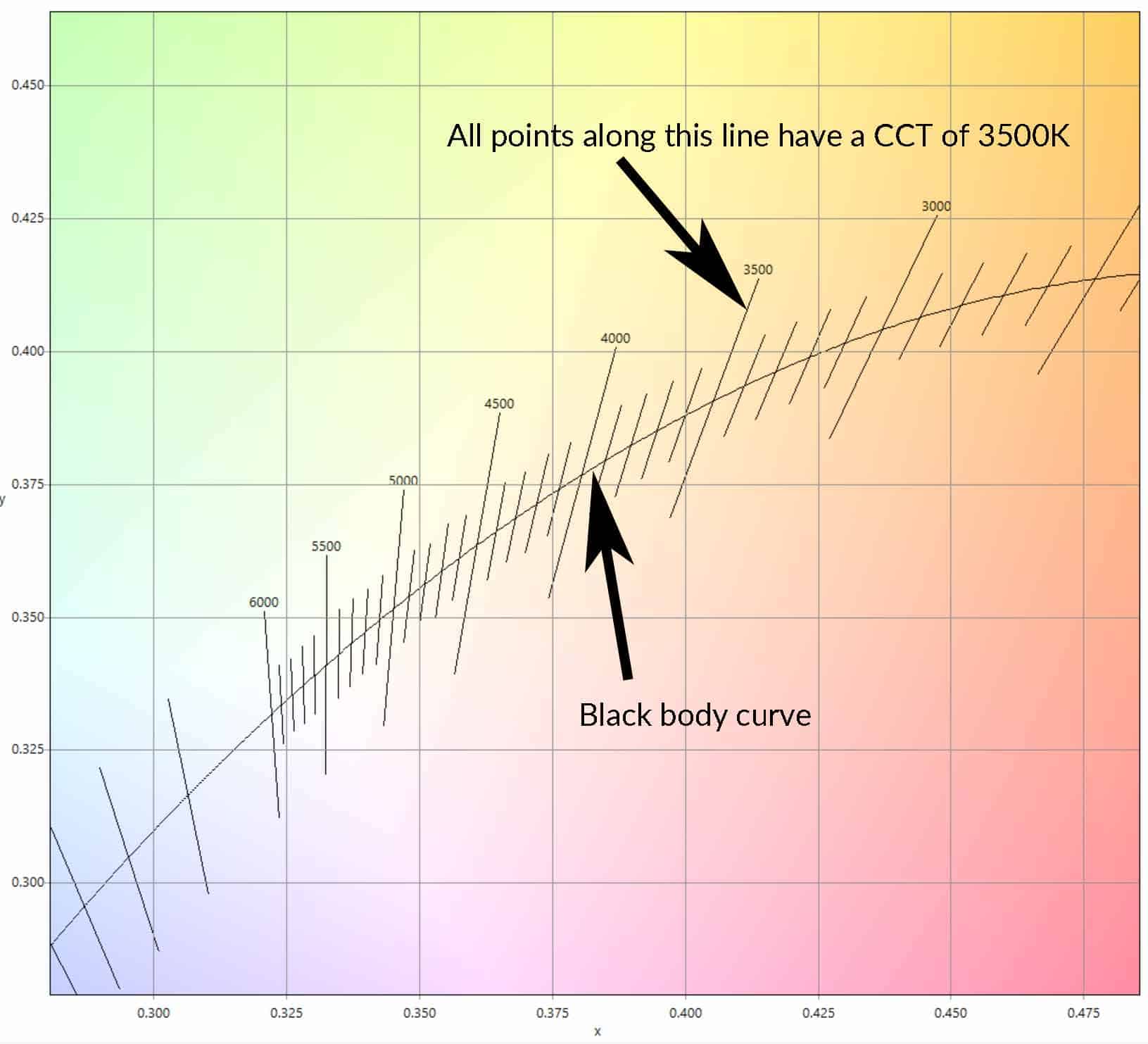
According to the definition of CCT, the light of the same CCT may have different color coordinates. The color will be reddish if the coordinate point is above the blackbody curve. Under the blackbody curve, it will be greenish. Duv is to describe this characteristic of light. Duv describes the distance of the light coordinate point from the blackbody curve. A positive Duv means the coordinate point is above the blackbody curve. While a negative one means it is below the blackbody curve. The larger the value of Duv, the farther it is from the blackbody curve.
So, the CCT is the same, but the Duv is different; the light’s color will look different.
For more information about Duv, please check here.
Conclusion
For a high-end lighting project, choosing the right CCT is critical. When the lighting project uses multiple brands of LED lights, matching different brands of LED lights with the same color can be tricky, even if these different brands of LED lights have the same marked CCT.
LEDYi is a professional LED strip manufacturer, and we package LED beads ourselves. We provide professional color matching services and customized CCT to our customers.
